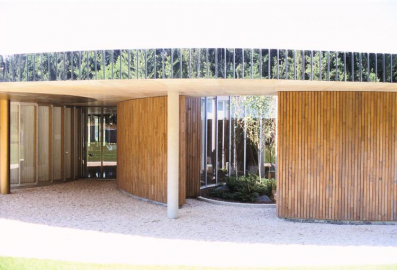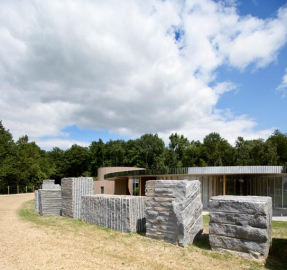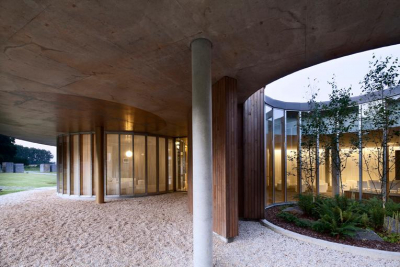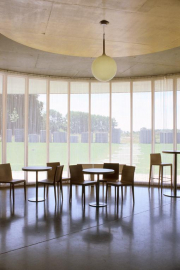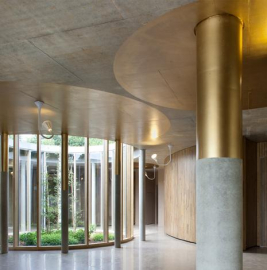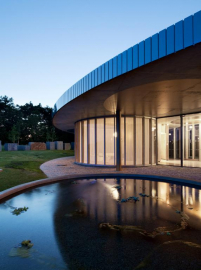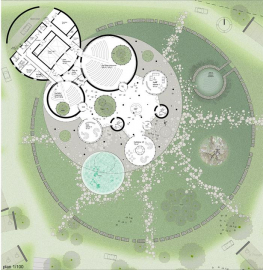Rennes Métropole's Crematorium
Largely marginal in the 1970s, cremation has experienced a slow but regu-lar progress for the last 20 years. But in many ways, it is still evocating the roughness of a ceremonial for free thinkers and reprobate people. Architecture is a key step in the invention process of a dignified ceremony.
In this very stimulating context, the collective PLAN01 got the chance to work on the crematorium project of Rennes Metropole. Over the group meetings held during the first two years, the 10 partners had the opportunity to clear individual apprehensions and refine their approach. This collective way to proceed has facilitated the elaboration of a strictly secular space that does not expel anyone, without denying the needs of emotion.
From the clearing to the shape of the rooms, the circle is a recurrent theme. It is repeated throughout the spatial configuration and its many declinations shape both the lands-cape and the 1100sq meter building. This spatial layout referred to life circle, constellation, but also to Stonehenge or Land Art works. The references to daily life vanish, creating a singular experience where orthogonality does not rule any more.
The reflection on access was influenced by the idea to avoid imposing one single common path leading to the crematorium, but rather to create a large number of possible approaches. Small car parks are discretely included in those wooded areas. By leaving theirs cars, mourners detach themselves from the outside world and enter a place entirely dedicated to ceremony and silence.
After crossing a broken enclosure formed by thick granite blocks (extracted in a local quarry), users go down a gently sloping planted section that converges on the building which creates an impression of fluidity between internal and external spaces. The choice of simple shapes and materials provides an integrated landscape of peace and tranquillity
The large central hall is the key piece in the people circula-tion system. There are no corridors but only flowing spaces, mainly illuminated by natural light with framed external views. This space has been conceived in order to reduce the feeling of being shut in.
The two ceremonial rooms are large circular spaces with de-dicated patios that bring light and air. This special layout design reconciles the contradictory need for openness and intimacy. Each room is complemented by draperies that enhance the acoustic characteristics.
The waiting areas are located as ante-rooms to the ceremo-nial spaces. Their walls are made of glass that can be completely hidden by translucent curtains, so that the levels of intimacy and openness can be controlled. This system also gives the possibility to avoid embarrassing encounters between two different families.
With its grass-covered roof and large exterior pool, the project blends into the vegetation of the landscape. It is also an integral part of its geographical surroundings through the use of local materials such as granite and wood. The choice of simple shapes and materials provides an integrated landscape of peace and tranquillity. It creates a dignified and serene area.

